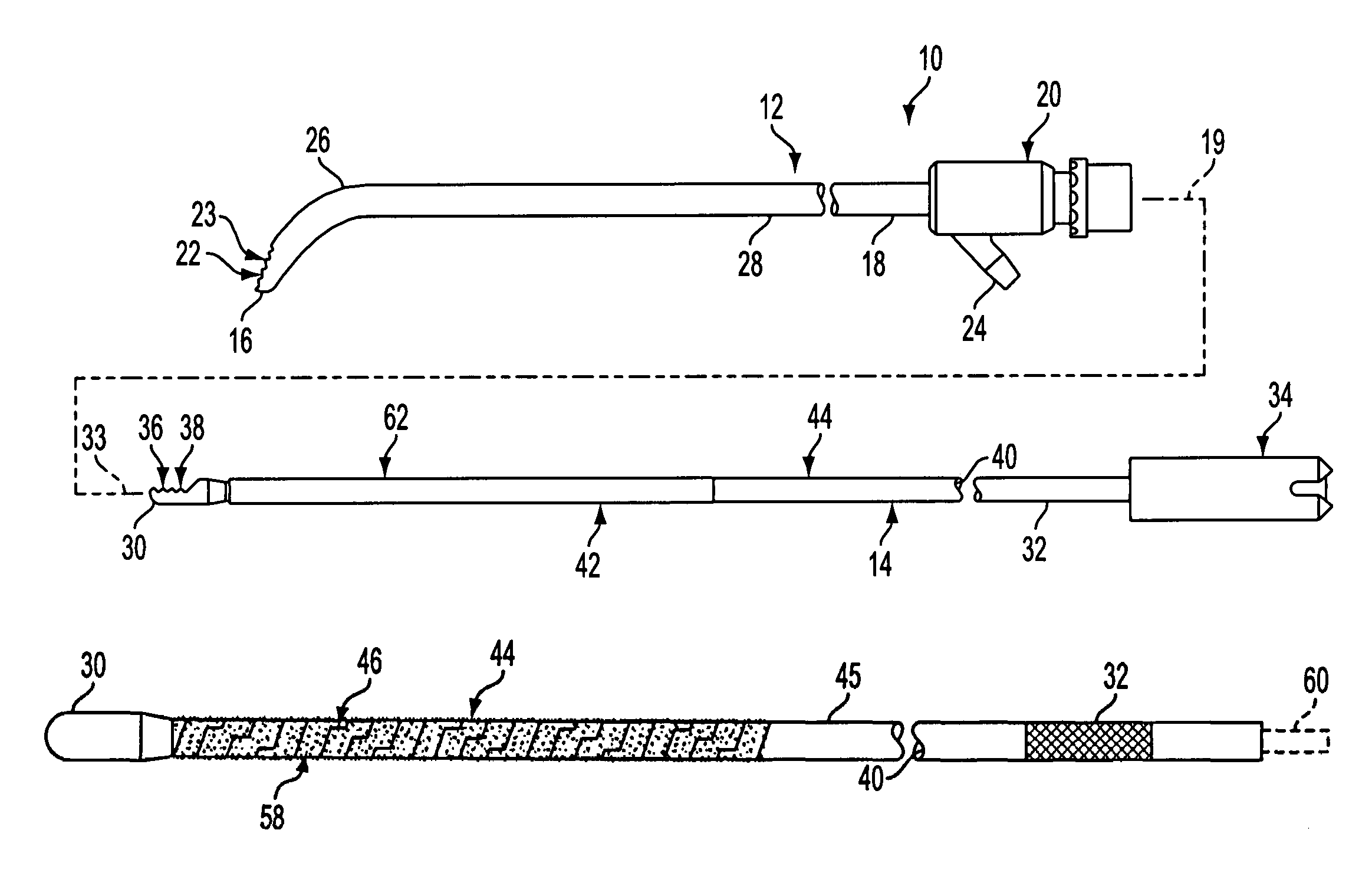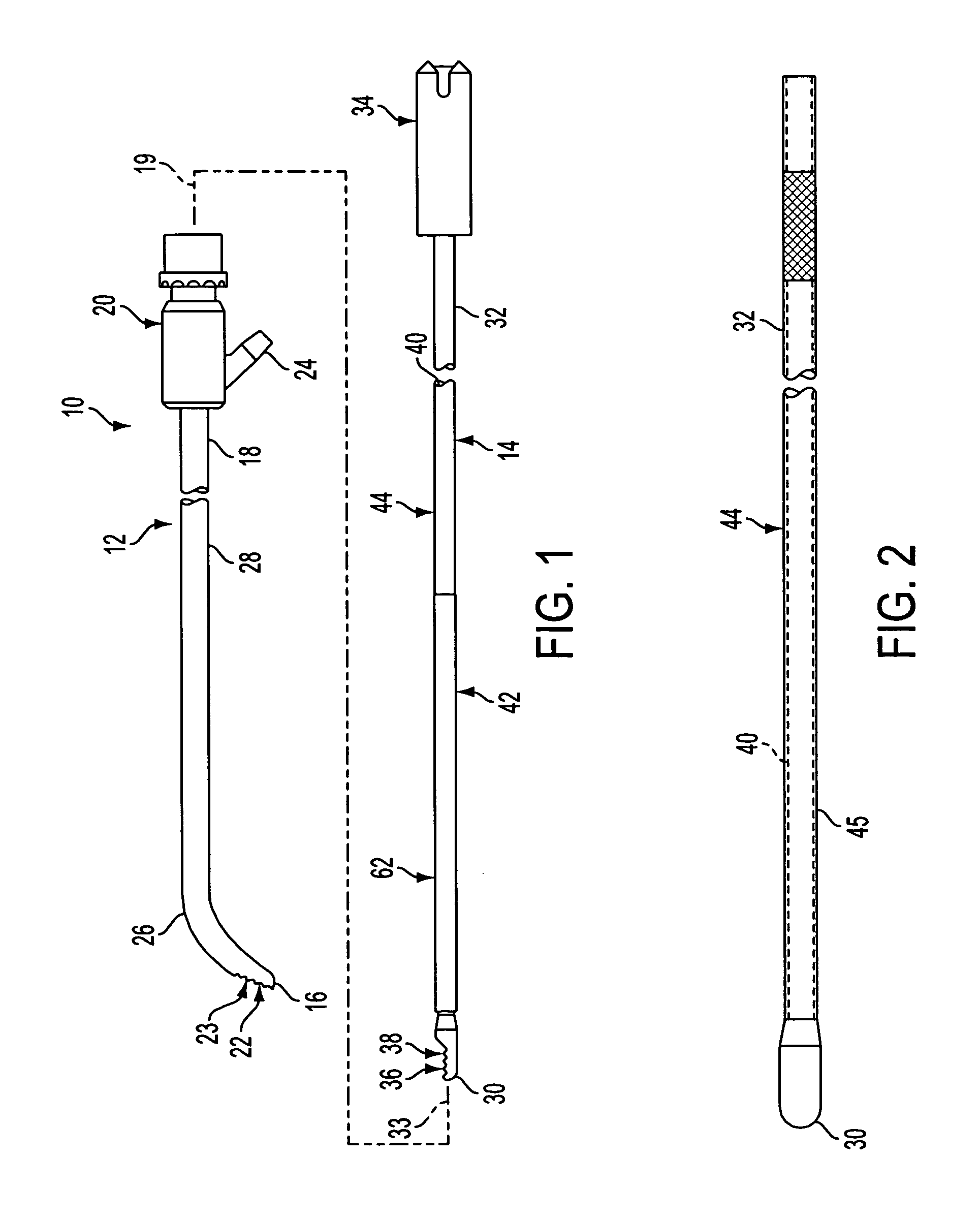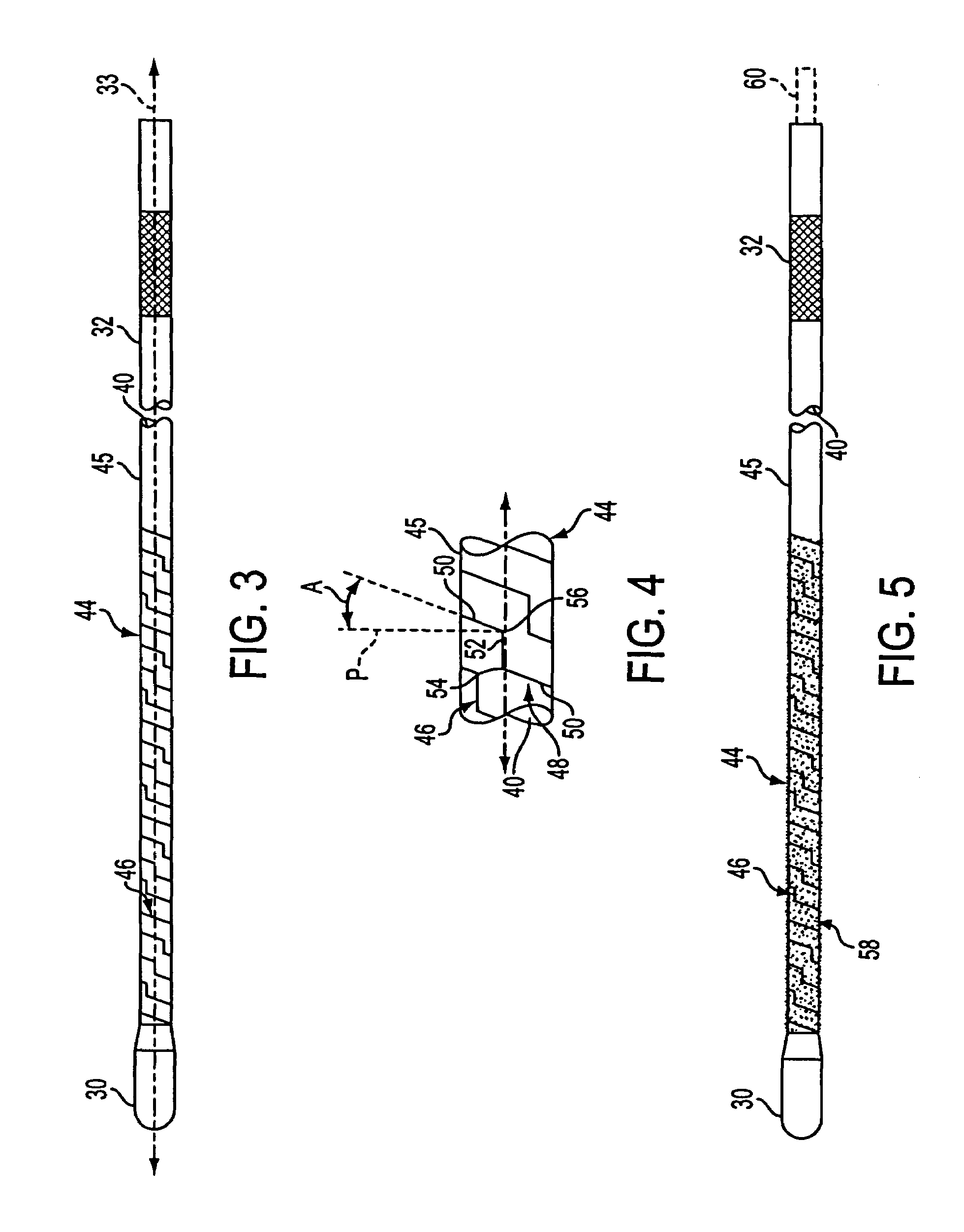Angled tissue cutting instruments having flexible inner tubular members of tube and sleeve construction
a tissue cutting and flexible technology, applied in the field of tissue cutting instruments, can solve the problems of ineffective transmission of torque to the cutting configuration, spirals adding material and labor costs to the flexible inner tubular member, and inability to operate in both forward and reverse rotational directions, so as to reduce wind-up
- Summary
- Abstract
- Description
- Claims
- Application Information
AI Technical Summary
Benefits of technology
Problems solved by technology
Method used
Image
Examples
Embodiment Construction
[0028]An angled tissue cutting instrument 10 according to the present invention is illustrated in FIG. 1 and comprises an elongate angled outer tubular member 12 and an elongate flexible inner tubular member 14 for being rotatably disposed in angled outer tubular member 12. The angled outer tubular member 12 is typically made of stainless steel and includes a distal end 16, a proximal end 18 and a central longitudinal axis 19 that follows a non-straight or angled longitudinal path. The proximal end 18 is typically attached to an outer member hub 20, which may be made of plastic. An opening is formed in the distal end 16 and defines a cutting port or window 22 providing communication with the lumen of the outer tubular member 12 from externally of distal end 16. The cutting port 22 can have various configurations and may be circumscribed by a peripheral edge. The peripheral edge that circumscribes the cutting port 22 can be a non-cutting edge or a cutting edge as depicted for outer t...
PUM
 Login to View More
Login to View More Abstract
Description
Claims
Application Information
 Login to View More
Login to View More - R&D
- Intellectual Property
- Life Sciences
- Materials
- Tech Scout
- Unparalleled Data Quality
- Higher Quality Content
- 60% Fewer Hallucinations
Browse by: Latest US Patents, China's latest patents, Technical Efficacy Thesaurus, Application Domain, Technology Topic, Popular Technical Reports.
© 2025 PatSnap. All rights reserved.Legal|Privacy policy|Modern Slavery Act Transparency Statement|Sitemap|About US| Contact US: help@patsnap.com



